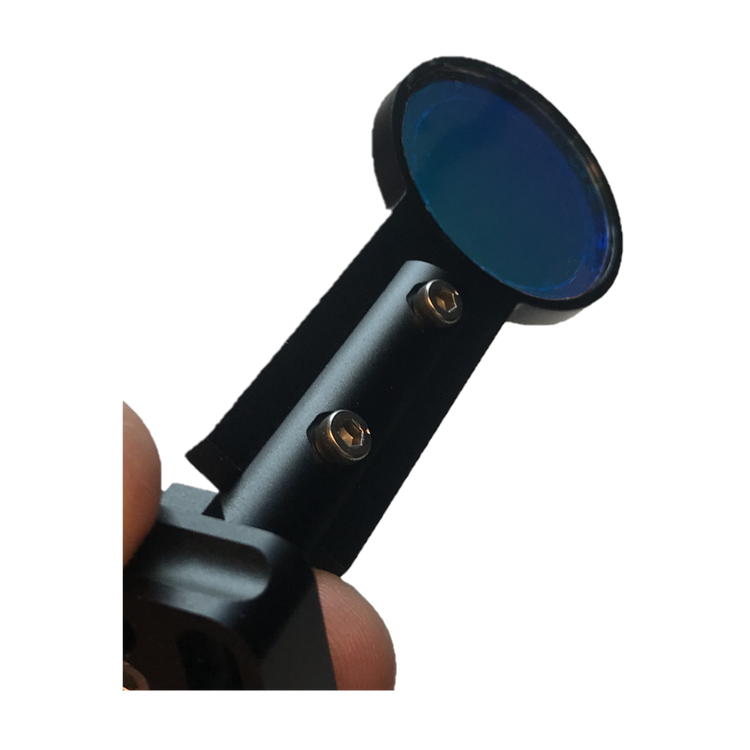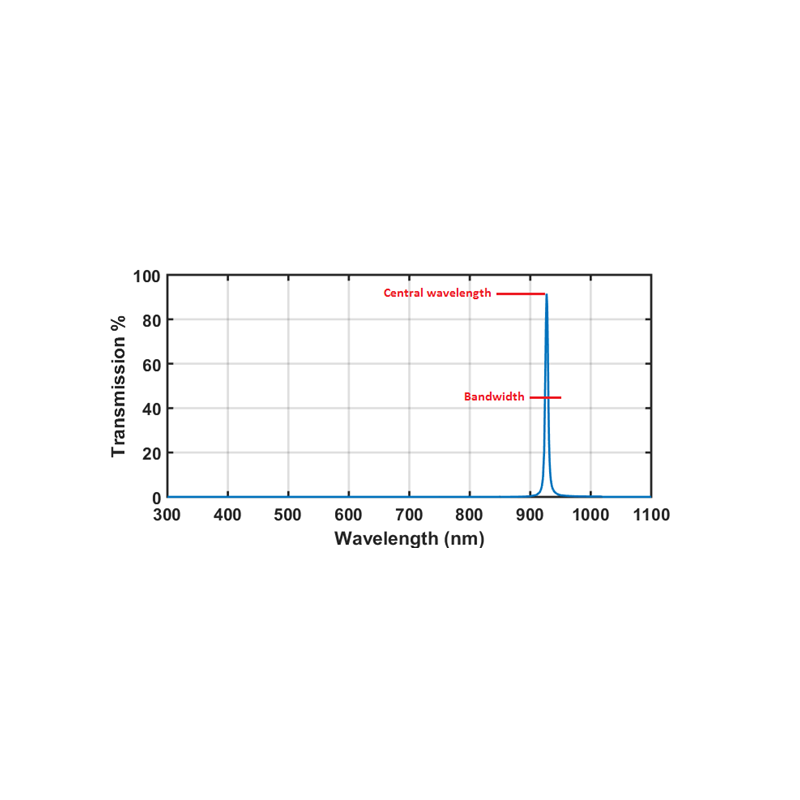
Bandpass Filters
Optical bandpass filters pass a single narrow wavelength band while blocking out-of-band wavelengths. Bandpass filters are referred to by a wavelength range, also known as the passband, where light is transmitted efficiently. The most important parameters in selecting a bandpass filter are the central wavelength, the bandwidth, and the out-of-band blocking efficiency.
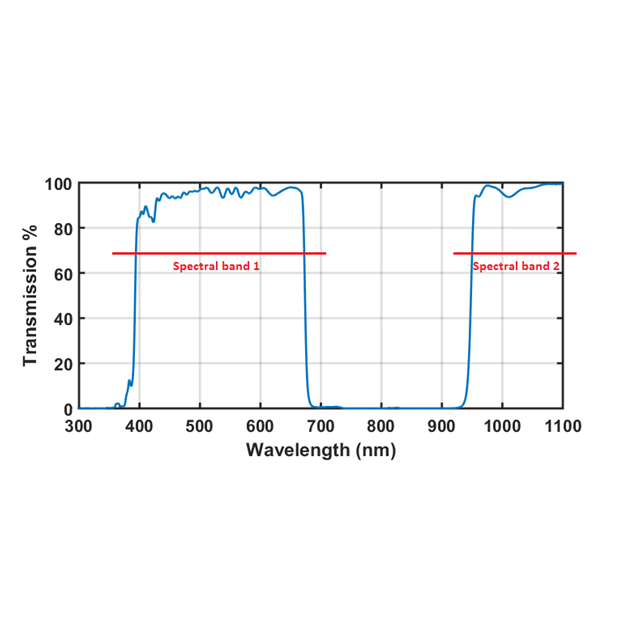
Multipass Filters
Multipass Filters transmit two or more specific wavelength ranges using a single substrate. The most important parameters in selecting a multipass filter are the central wavelengths, the bandwidth of each spectral band, and the out-of-band blocking.
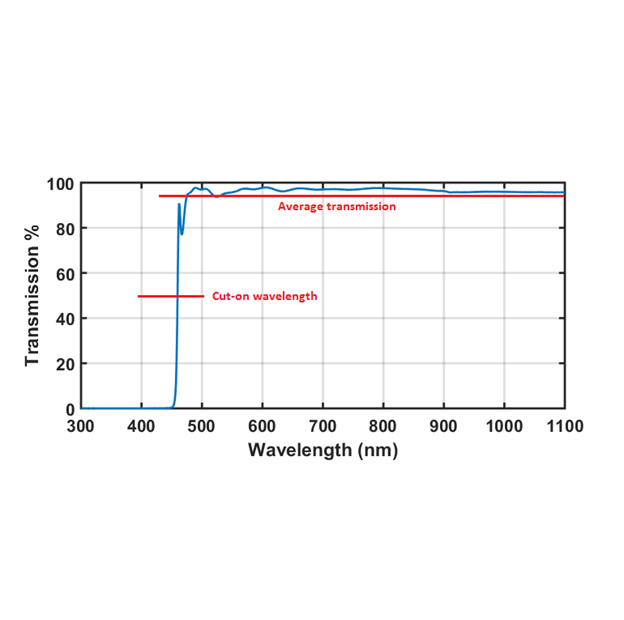
Longpass Filters
Long pass filters, known as long pass edge filters, are designed to transmit wavelengths within a given wavelength range. The pass band is defined by the filter’s cut-on edge wavelength. Light below the cut-on edge is blocked by the filter. The parameters out-of-band blocking efficiency, cut-on edge wavelength, and spectral range are essential for defining a long pass filter.
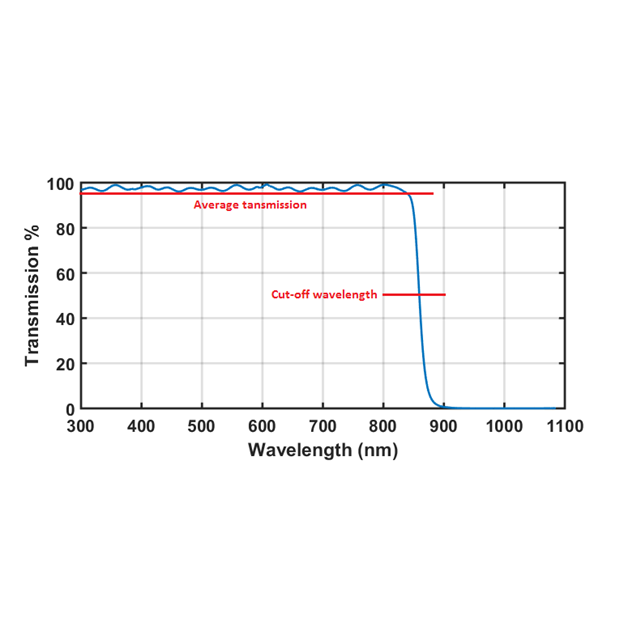
Shortpass Filters
Short pass filters, known as short pass edge filters, are designed to transmit wavelengths within a given wavelength range. The transmission band is defined by the filter’s cut-off edge wavelength, which blocks wavelengths longer than the specified edge wavelength. Specifying the out-of-band blocking efficiency, the cut-off edge wavelength, and spectral range are essential for selecting a shortpass filter.

